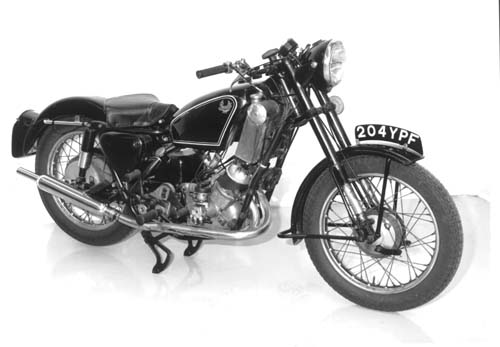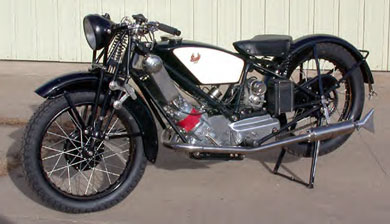Great Scott - Scott motorcycles
The life and times of the Scott Motorcycle
Back in the day when great engineers ruled the world there was one such engineering genius who was born in Yorkshire in 1874, called Alfred Angas Scott and he invented a motorcycle that could really go and was the ancestor of the modern motorbike.
Up until the early 1900s, the motorcycle had really just been a glorified and motorized bicycle built around a traditional bicycle frame, basically just an engine added to a pedal bike. Then Scott came along and as part of his engineering evolution, the young Scott turned his thoughts and his creative mind to motorcycles and, working entirely from first principles, designed the two speed 'Scott' motorcycle, which he patented in 1908.
Scott's first attempt to build a motorcycle, which appeared under patent in 1902, was a basic belt driven deflector plate machine, but this quickly morphed into the far superior, streamlined, chain driven, twin cylinder engine 'Scott' motorcycle of 1908. The twin cylinder engine was installed into the head of a bicycle and with the addition of water cooling, telescopic forks and a lightweight frame, hit the road running and remained similar in design for the next 70 years.
The first Scott two speed motorcycles went into production in Yorkshire and proved to be very fast and efficient. Scott motorcycles began to triumph in racing, but as they were so much faster than the competition, this caused much consternation in the fledgling motorcycle racing world! Other racers began to claim that Scott was cheating as his bike had two gears and two cylinders compared to their one, and said that he had an unfair advantage. As a reaction to this, the Scott motorcycle was given a handicap for racing as it was seen to be 'too efficient' and didn't give its competitors a chance!
However despite this handicap, in 1912 Frank Applebee won the historic Isle of Man TT on a Scott motorcycle making him the first winner on a two stroke and the first winner to lead for the entire race. This historic TT win, coupled with the fact that Scott motorcycles were handicapped in racing because they were 'too fast' may have worked in Scott's favour and sales subsequently rose to 550 a year.
Alfred Scott's motorcycle factory continued producing great motorcycles until the outbreak of the First World War and then Scott left his motorcycle factory to pursue another of his inventions, the 'Scott Sociable' which was a three wheeled vehicle. Although to Scott this must have seemed like a good idea at the time, it never really took off, and never had the success of his superb motorcycle.
In fact poor Scott did not live to see the evolution of his motorcycle as, in the summer of 1923, he was travelling home from a Potholing expedition in his open Scott Sociable with his wet potholing clothes on and became ill with pneumonia and died at the age of 48 - a great loss to the world of innovation.
Scott's motorcycle factory had to carry on without him when he left for Sociable pastures new, but it continued down the path which Scott had started. After the war in 1922, the Scott factory designers brought out a new model called the Squirrel, followed a couple of years later by the Super Squirrel and then the Flying Squirrel...perhaps they needed Scott to think of new names...
These were the machines which made the Scott Motorcycle truly famous, evolving from a two-speed clutch/transmission, into three-speed gearbox/conventional clutch driven machine. And then in the early 1930s the lightweight two speed models were dropped from the range.
He ain't heavy, he's my brother
Unfortunately each new model increased in weight, due partly to increasingly large wheel hubs, and this extra weight caused a significant reduction in performance. After the Second World War in 1946, the company relaunched the Flying Squirrel but it turned out to be really more of a plodding squirrel and did not have the nippy appeal of the earlier Scott motorcycles. It was available as a 500 or 600cc bike but was even heavier than its predecessor and expensive, and sales never really recovered until eventually the company went into liquidation in 1950.
However Scott motorcycles were not dead yet, and in 1950, seeing its potential, the company was bought by Matt Holder who restarted the company in that great home of manufacturing, Birmingham.
The first Birmingham Scott rolled off the production line in 1956 with a 596cc model with a duplex frame, telescopic front fork and swinging arm rear suspension.This iconic bike carried on in production until the early 1970s, still featuring some of the characteristics of the original model.
The Marmite of motorcycles
Scott motorcycles always seem to evoke a strong reaction, people either love them or hate them, but whatever your view you have to admire the innovative spirit and ground breaking technology of their creator. Although Scott motorcycles are no longer in production, they still have a great and loyal following amongst classic and vintage motorcyclists and are still being happily ridden, raced, restored and rebuilt by enthusiasts today.
NB - A contribution from a reader...

Flying Squirrel
This is a 600cc Birmingham built Flying Squirrel Scott. Probably pre 1960 (57-58) having the single saddle, and Enfield front brake. Around 20bhp at 4500 RPM and far too heavy for its meagre output. Nevertheless a nice comfy ride,and good handling and brakes (for the time) 3 speed gearbox. The last Scott model made from the mid 50s to mid 60s. Built at St. Mary's Row in Birmingham,by the Aerco Jig and Tool Company (Matt Holder)
Thanks to Andy Eames for the note and the great picture

